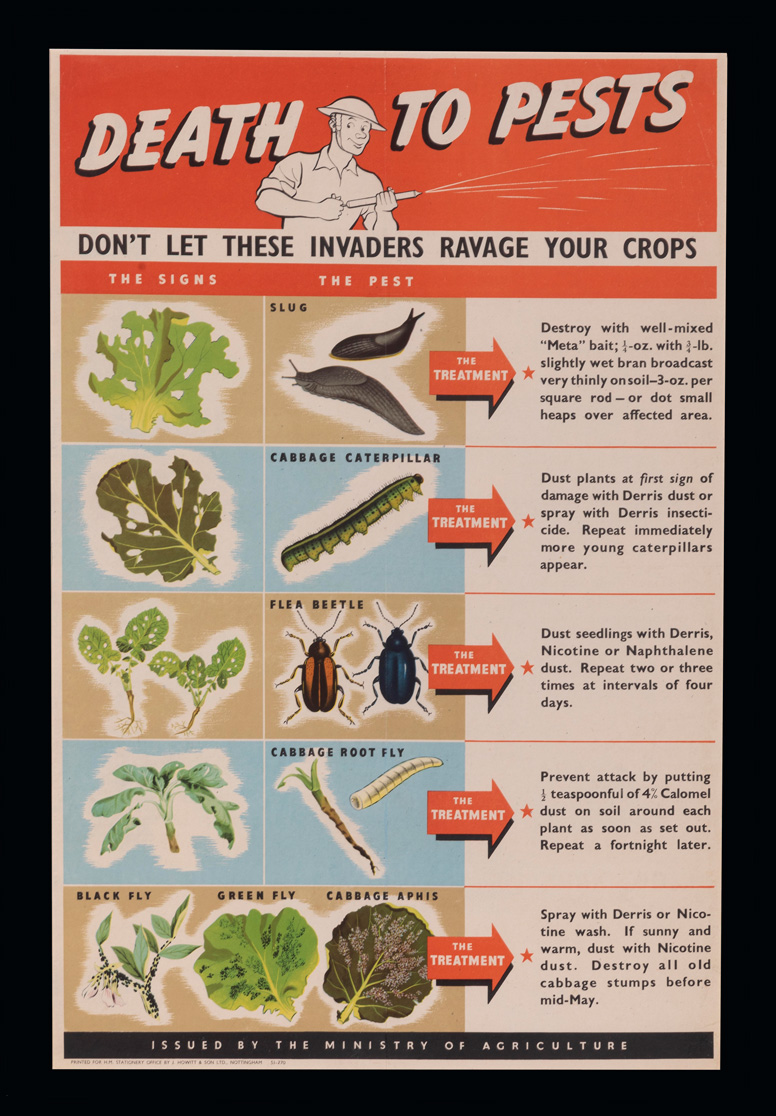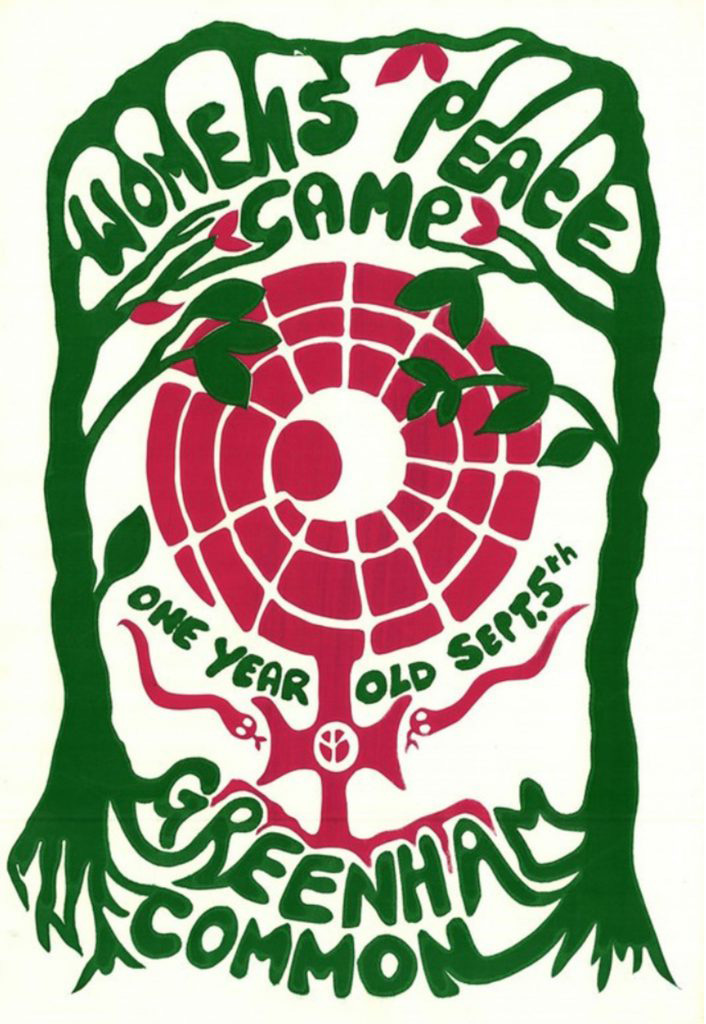Same displays, different ways: Our Green Stories gallery tours
Discussion points from the first series of Our Green Stories tours
What connects queer horticultural pioneers, coastal erosion in Norfolk, light beams for counting insects, and the fourth agricultural revolution? They all emerged as discussion points during Our Green Stories tours of The MERL galleries last term. As we embark on a fresh series of these tours, MERL Curator Ollie Douglas casts his mind back to conversations he had earlier in the year.
Our recent focus on Our Green Stories has included new tours that offer a departure from the usual approach to specialist talks. We invite experts to offer their perspectives in a less static way, bringing them into the galleries to shape bespoke journeys through our displays. My job is to care for and interpret these collections and, depending on the topic, I often have a thin veneer of my own knowledge to impart. But the joy of this approach is to hand the metaphorical mic to our guest tour guide, who is able to render my generalising observations into a much deeper experience.
We bounce ideas back and forth between us and draw on the interests and experiences of our audience as we move round the building. The last series grew in popularity and by the fourth tour these events were commanding an extensive entourage, obstructing routes through the galleries much like environmental protesters addressing similar themes might do elsewhere! So, as we embark on the next series, I’m taking a moment to glance back and reflect on previous tours.
Alex Arnall and the Rural Idyll
The first series kicked off with the ‘rural idyll’, drawing on the expertise of Alex Arnall, an environmental geographer specialising in migration, movement, and the displacement of people and things. This shed full of displaced rural items in an urban context had already enticed Alex, who previously held a MERL Fellowship on the Land Settlement Association and contributed to our 51 Voices project. For the latter he examined the ‘chocolate box’ perception of rural England, using imagery on a mid-century jigsaw puzzle. These strands of his work formed touchstones during the tour.

Alex introduced our cohort to the prevalent idea that the countryside is a healthy green space of wellbeing and recuperation. However, whilst it continues to serve this role for many users, there is a stark contrast when considering the same spaces from the perspective of poorest people in society. For them, rural spaces can represent drudgery, poverty, and illness, or may be entirely inaccessible.
From man traps to green wood crafts, we took the group on a route through the galleries that helped to dispel popular myths of our ‘green and pleasant land’. We introduced critical ideas related to the value of labour and of ‘authenticity’ in heritage crafts, the rural as often seen to be exclusively white and inaccessible to people of colour, and in connection to Alex’s expertise on migrants and movement of populations, we considered the perceived threat that itinerant craftspeople and Gypsy, Roma, Traveller communities have posed and continue to pose to fixed ideas of place, space, and settled living.
This tour finished with time for Alex to reflect on decommissioned communities in rural England, and most particularly on his current work around coastal imaginaries and resettlement of people from the crumbling fringes of the rapidly eroding Norfolk coast. He drew here on a examples from the UK and elsewhere, connecting reimagined ideas of rural England back to the complex intersecting hazards of development and of climate-related damage and loss.
Alice Mauchline and Farm Ecology
Alice talked us though three pillars of sustainability—Social, Environmental, and Financial—and explored ELMS as an example of ‘public money for public goods’. We then delved more deeply into Integrated Pest Management, with both old and new ways of visually communicating common pests. Alice then shared amazing examples of monitoring insects on oil seed rape, by using either simple tallies or with specialist beams of light that identify the correct insect wing beats. The mention of new tech sparked discussion about the real value of digital solutions, including use of RFID wand readers to identify individual animals in much the same way previously done by farmers simply recognising their own livestock.

Alice went on to explain the potential to use a particular flower species as an indicator of the emergence of a specific parasite in sheep. So, ramblers could identify the moment when these flowers emerge and thereby alert farmers to when they need to be vigilant about parasites. This was a neat way to introduce citizen science, another area of interest for Alice, who described how the same approaches we see in garden butterfly and birdwatching schemes are applied in bigger landscapes, with farmers as data-gatherers.
From a community farming social enterprise in Cambridge, to precision farming and machine learning, we examined the different directions that farming might develop in the future. Alice talked about how ELMS needed to work for upland farming in the north, big arable in the south, and numerous other systems and scales of production. She finished off by using two farms depicted in our Festival of Britain wall-hanging to explain the idea of cluster farms, where approaches to nature are shared across landscapes not just individual properties.
Jenny Chamarette and Queer Gardening
Jenny Chamarette is a nature writer and academic and was recently in receipt of a MERL Fellowship to support work on her book project, ‘Q is for Garden’. Our tour set out to examine LGBTQ+ perspectives on UK horticulture and how politics, gender, and sexuality have long been factors gardening and the environment. This began with a description of how Indian Vedic agriculture lay the groundwork for organics, which only later morphed into radical activism. Meanwhile, Jenny explained that the origin of ‘radical’ lies in the word ‘radic’, meaning ‘root’. Still on India, we discussed how some of the earliest enclosure acts were implemented at the same time as the East India Trading Company was granted its charter.
Jenny shared the history of the Great Hedge of India, which was an example of ‘arboreal warfare’, using plants to control people. It was underpinned by the colonial myth of orderliness, which contrasted with the messy absurdity of trying to grow a hedge along thousands of miles of the Indian subcontinent. Jenny quoted P. D. James:
“There is more violence in an English hedgerow than in the meanest streets of a great city”
She went on to explore the characterisation of gardening as straight, white, and bourgeois. This led to discussion of Greenham Common, queer action, and eco-critical protest. We discussed the history of the Women’s Farm and Garden Association, Studley College, and the Women’s Land Army. Land Girls in both wars transgressed clothing norms and took on roles seen as masculine.

Jenny spoke about Gertrude Jekyll as someone who gardened radically and described the earliest women gardeners at Kew, whose practices challenges the usual gendered world of horticulture. We introduced twentieth-century landscape designer Sally Colvin, and discussing the leadership of Waterperry Horticultural College by Beatrix Havergal. Jenny went on to delve more deeply into Havergal and her partner Avice Sanders, their influence as gardeners, and their wider impact; Havergal being the inspiration behind Roald Dahl’s terrifying Miss Trunchbull.
We then turned to the story of Eve Balfour, who is presented in our gallery text as an organic farming pioneer and University of Reading graduate. Her sexuality doesn’t get a mention. Jenny described a photograph of Balfour in detail, exploring how her posture, pose, and clothing were ungendered and ambiguous. Jenny concluded with the observation that just because ways to describe different genders and sexualities didn’t always exist in the past, we could use creative and speculative approaches to navigate histories in new ways. The normative approach we use towards sexuality and gender are not far removed from the binary language of land rights, of owners and outliers.
Mike Goodman and the Future of Food

Discussing these Anthropocene moments of change in food and farming, we delved more deeply into the ‘Green Revolution’, its impact on post-war food security and poverty, and its unforeseen environmental and climate legacies. Mike then used discussion of the past to reflect on our future, inviting the group to say what they imagined the term ‘fourth agricultural revolution’ to mean.
As he went on to explain, we are in the midst of the so called fourth agricultural revolution—gene editing, AI, robotics, disease resistant varieties, vertical farming, synthetic meats—but we don’t yet know what the positive impacts or negative consequences of any of these changes will be. That Museum gallery is yet to be made.
Mike talked about consumer demand and how this drives change in food systems. We explored how solutions like vertical and urban farming look unfamiliar and don’t fit the ELMS model of farming as land stewardship and environmental goods. We also paused to reflect on synthetic meats and the investment of faith in lab-grown solutions, which are so easily contrasted with agroforestry or regenerative farming. The collection engendered discussion of energy and power sources—animal, steam, and petrol—and how, with the advantage of hindsight, we can now see these as tangents in the history of farm change. What form might the future failings or detours in our food systems take?
Jim Hindle’s protest clothing invited consideration of activism and direct action. Is people power another force that can heavily influence the future of farming and food production? Mike took this moment to ask how much voice and impact consumers really have. This seemed a perfect moment to introduce local actions on food production. We again explored community farms and with the help of a surprise guest, Sabine Mayeux, we were able to delve into community kitchens and food banks. Sabine works with the Council on food issues and was able to share details of a Recent Berkshire Public Health Annual Report on local initiatives on food poverty, as well as describing new directions in both voluntary sector and statutory services.
The tour concluded with musings on how we might cultivate a more realistic relationship with our sources of food, including consideration of what factors might play into how farming will change. What agency do we have in these processes? Whose stories might we be telling in farm and food heritage in the future? Will we be talking about celebrity environmentalists, or perhaps we’ll be focusing on histories from below that emphasise stories of small-scale farmers, food inventors, indigenous ecologists, land rights activists, and other pioneers.
Future tours…
Following the last series we snuck in a brief Climate Week bonus tour, where Head of Archives Guy Baxter and I spoke about climate stripes artwork and the newest environmental narratives in Ladybird Books. Along with the fascinating full first series above, these tours feel like a hard act to follow, but this also seems like an exciting and important way to make use of our displays. So, we’re about to embark on a new series, starting in early October.
Echoing the interim double-act with Guy, I’ll be kicking things off with the help of another colleague, Tim Jerrome. Together Tim and I will be hunting for histories of mining and resource extraction in our displays and sharing just some of the findings of a talented Leicester University intern who joined us over the summer. This will be followed by a tour devised with specialist researchers working on the Feed the Birds, Do Not Feed the Animals project. In early November I’ll be joined by Art Curator Hannah Lyons for a leisurely saunter through landscapes and nature studies in The MERL and University Art Collections, and we’ll round things off with our wonderful gardener Cathy Smith who is set to share the amazing work that she and our team of community volunteers do in the garden.
So, why not book on one of these upcoming tours, join in the conversation, and add your green stories to our green stories?
3 October – Collections Officer Tim Jerrome – Fossil Fuels tour
17 October – 2 ECRs from Do Not Feed The Animals
14 November – Hannah Lyons – ‘Our Green Artists’ featuring the University Art Collection
28 November – Cathy Smith – ‘Our Green Fingers’ featuring a visit to The MERL garden

